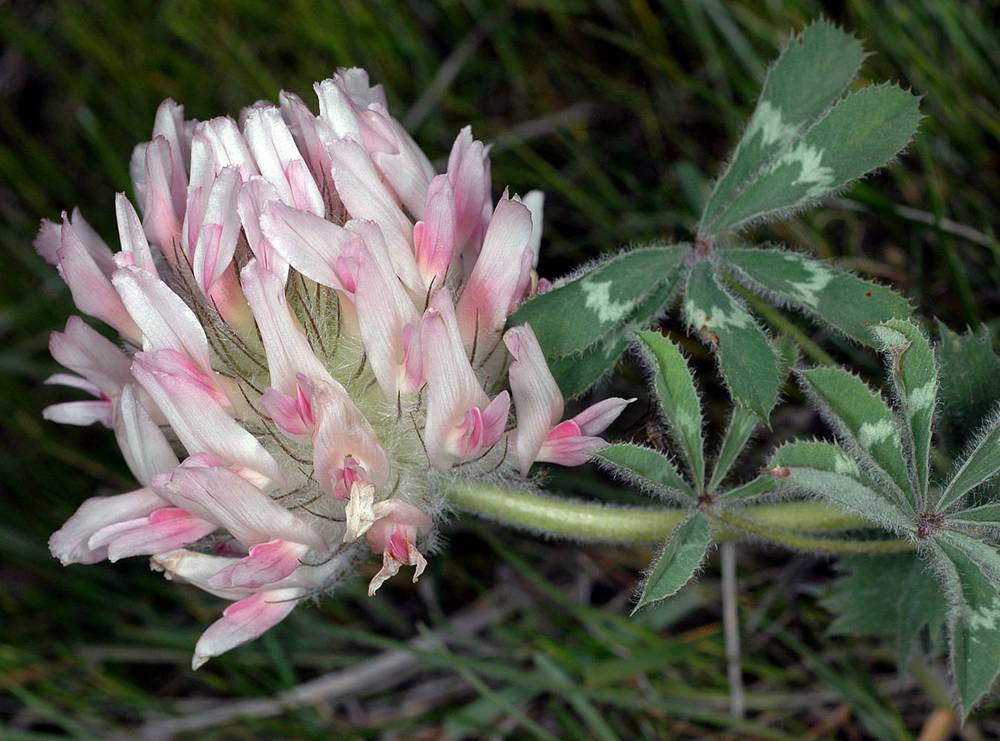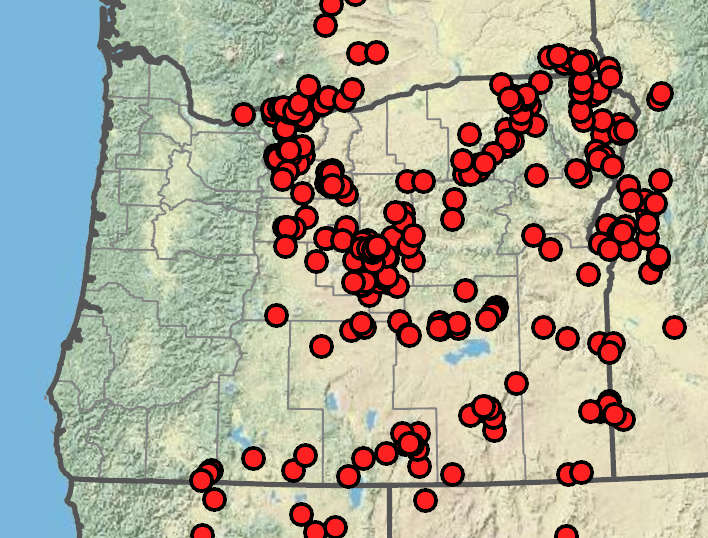Trifolium macrocephalum
Trifolium breweri
big-headed clover, largehead clover
Brewer's clover
palmate;
leaflets (5)7–9, broadly to narrowly obovate, often folded, 10–27 × 4–11 mm, bases cuneate;
margins serrulate or irregularly lobed;
veins thickened, especially distally;
tips rounded or truncate, apiculate;
surfaces abaxially villous, adaxially sparsely villous to glabrate;
petioles 10–140 mm;
petiolules 0.9–1.2 mm;
stipules ovate, obovate, or oblong, 10–30 mm;
margins entire.
pinnate;
leaflets 3, obovate to obcordate, 3–15 × 3–12 mm, bases cuneate;
margins dentate;
veins thickened, recurved;
tips obtuse or emarginate;
surfaces abaxially sparsely hairy, adaxially glabrous;
petioles 3–40 mm;
petiolules ~0.5 mm;
stipules lanceolate to narrowly ovate, 3–10 mm;
margins entire;
tips long-acuminate.
terminal, 20–32-flowered, globose or ovoid-ellipsoidal, 25–80 × 30–70 mm;
involucres absent;
bracteoles broadly ovate, membranous; ? 0.5 mm, truncate.
axillary, 5–25-flowered, globose, 13–15 × 13–15 mm;
rachises sometimes prolonged beyond flowers;
involucres absent;
bracteoles minute.
20–80 mm.
proximal to inflorescence, 30–50 mm;
flowers appearing inverted.
erect, 1–1.5 mm.
strongly reflexed in fruit, 2–3 mm.
20–30 mm;
calyces campanulate, 10–22 mm, villous;
veins 10–15;
tubes 2.5–4 mm;
lobes subulate, subequal, 2–4 × tube length, plumose;
orifices open;
corollas 20–28 mm, white; creamy white, or pinkish;
banners ovate or oblong, 20–28 × 10–13 mm;
tips rounded or slightly emarginate;
keel petals deep pink.
11–13 mm;
calyces tubular, 6–8 mm, pilose or glabrous;
veins 10;
tubes 1.5–2 mm;
lobes subulate, subequal;
margins entire;
orifices open;
corollas 6–10 mm; rose-pink or creamy white;
banners ovate-oblong, 6–10 × 3 mm; as long as wing and keel petals;
tips rounded or emarginate.
longitudinally dehiscent; ovoid, 4–5 mm; ? calyces.
longitudinally dehiscent; ovoid-ellipsoid, 7–10 mm; ? calyces; short-stipitate.
1–2; mitten-shaped to ellipsoid, 2.5–3 mm, yellow or reddish; smooth.
1–2; ovoid-ellipsoid, 2.5–3 mm, brown; smooth.
=32, 48.
=16.
Trifolium macrocephalum
Trifolium breweri
Rocky places, hard, compacted clay gumbo, lava beds, sage-covered slopes. Flowering Apr–Jul. 0–2200 m. BR, BW, Col, ECas, Lava, Owy. CA, ID, NV, WA. Native.
Trifolium macrocephalum has the largest inflorescences of any species in the genus. The name T. megacephalum is an illegitimate replacement name for Lupinaster macrocephalum.
Wooded areas, roadsides, mixed evergreen or pine forests. Flowering Jun–Jul. 500–1000 m. Sisk. CA; south to Mexico. Native.
Trifolium breweri was considered by Martin (1943) as a remarkably morphologically uniform species; it was considered by Clements (1920) as a foundational species in the Sierran Montane Forest Pinus Association climax formation.
Michael Vincent
Michael Vincent





